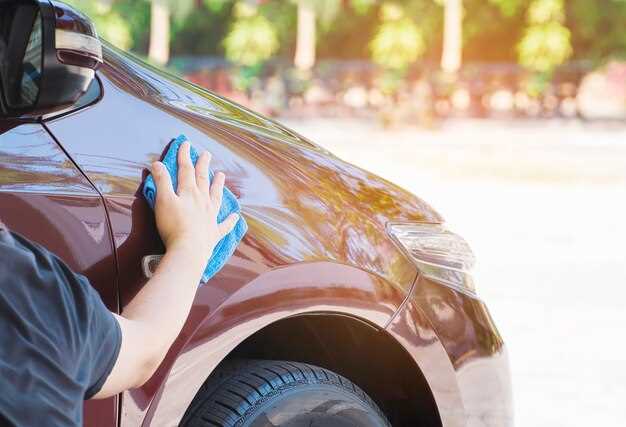
The sun’s rays can have a detrimental effect on your car’s paint job, leading to fading, oxidation, and even peeling over time. For car enthusiasts and everyday drivers alike, maintaining the integrity of your vehicle’s exterior is essential not only for aesthetic purposes but also for preserving its value. Understanding the causes of sun damage is the first step in safeguarding your car from its harmful effects.
When a car is exposed to intense sunlight, UV rays penetrate the paint surface, breaking down the molecules that give it its vibrant color and protective qualities. This process can result in unsightly blemishes that detract from the overall appearance of your vehicle. Fortunately, there are several effective strategies you can implement to protect your car’s paint from damage caused by the sun.
In this article, we will explore practical tips and techniques that can help you shield your car’s paint from the relentless sun. From the right washing techniques to the use of protective products, these steps will ensure your car remains in pristine condition, resisting the adverse effects of solar exposure for years to come.
Choosing the Right Wax or Sealant for UV Protection

Selecting an effective wax or sealant is crucial for protecting your car’s paint from sun damage. The right product can create a barrier that shields your vehicle from harmful UV rays, preventing oxidation and fading.
When choosing a wax or sealant, consider the following factors:
- Type of Protection: Look for products specifically labeled as UV resistant. These formulations contain ingredients designed to absorb or reflect UV rays.
- Longevity: Sealants typically provide longer-lasting protection compared to traditional waxes. They can endure harsher conditions and require less frequent application.
- Ease of Application: Choose a product that suits your level of expertise. Waxes are often easier to apply for beginners, while sealants may require more care and preparation.
- Finish Quality: Consider whether you prefer a high-gloss finish or a more natural look. Some products enhance shine while others focus on depth and clarity.
- Environmental Conditions: Evaluate the climate in your area. If your vehicle is exposed to extreme heat, humidity, or frequent rain, a durable sealant may offer superior protection.
Here are some recommended types of waxes and sealants:
- Carnauba Wax: Known for its deep shine, carnauba wax is a natural option that provides a decent level of UV protection but may need frequent reapplication.
- Synthetic Sealants: These are engineered for longer-lasting protection against sun damage, providing a hard, protective layer that can last for months.
- Hybrid Products: Combining the benefits of both wax and sealant, hybrid options offer high gloss and extended durability while also delivering UV protection.
Ultimately, the best choice depends on your specific needs and how frequently you are willing to maintain your vehicle’s finish. Regular application of the chosen product will maximize its effectiveness in shielding your car’s paint from sun damage.
Best Parking Practices to Minimize Sun Exposure
To protect your car from sun damage, adopting effective parking practices is essential. Whenever possible, choose shaded areas when parking. This could be under trees, awnings, or structures that provide protection from direct sunlight. Not only does shade help keep your vehicle cooler, but it also reduces the risk of paint fading and oxidation caused by prolonged sun exposure.
Another smart strategy is to park facing away from the sun. This positioning can help minimize direct sunlight hitting the most exposed areas of your car, particularly the hood and windshield. Additionally, consider using a reflective sunshade on your windshield to block harmful UV rays and keep the interior cooler.
If parking in a garage is an option, take advantage of it. A garage not only shields your vehicle from the sun but also protects it from other environmental elements such as rain, snow, or debris that could cause further damage. Ensure that the garage is well-ventilated to prevent heat buildup.
When outdoor parking is unavoidable, using a high-quality car cover designed for UV protection can be a worthwhile investment. This cover acts as a barrier against sun damage while also preventing scratches and dust accumulation.
Regular Maintenance: Washing and Detailing to Preserve Paint

Regular maintenance of your car is essential for preventing damage to its paint. Frequent washing helps remove dirt, grime, and pollutants that can lead to deterioration over time. It is recommended to wash your car every two weeks, especially during sunny weather when harmful UV rays can accelerate paint fading.
Use a pH-balanced car shampoo to ensure that the cleaning process is gentle on the paint. Avoid using dish soap or household cleaners, as they can strip away protective wax layers. Always use a soft microfiber cloth or sponge to minimize the risk of scratching the surface.
In addition to routine washing, detailing your car at least twice a year will further protect the paint. Detailing involves a thorough cleaning and restoration process that includes waxing and polishing. This not only enhances the appearance but also adds a protective barrier against harmful elements.
Waxing forms a protective layer on the car’s surface that guards against UV rays and environmental contaminants, thus reducing the likelihood of paint damage. Synthetic waxes typically offer greater durability than natural waxes and should be applied regularly.
Furthermore, consider using a ceramic coating for enhanced protection. This advanced product creates a long-lasting shield that repels dirt and UV rays, providing a superior defense for your paint.
By committing to regular washing and detailing, you can significantly prolong the life and vibrancy of your car’s paint, ensuring it remains in excellent condition despite exposure to the elements.




